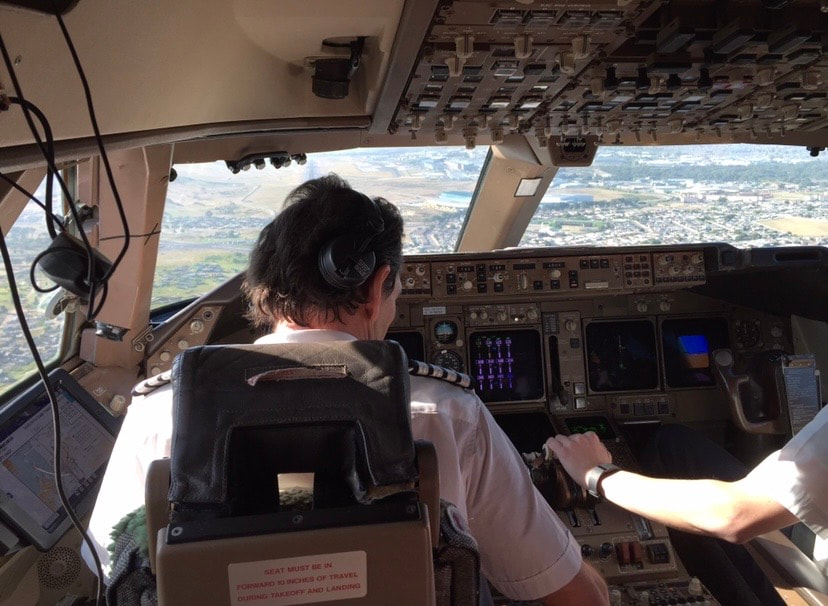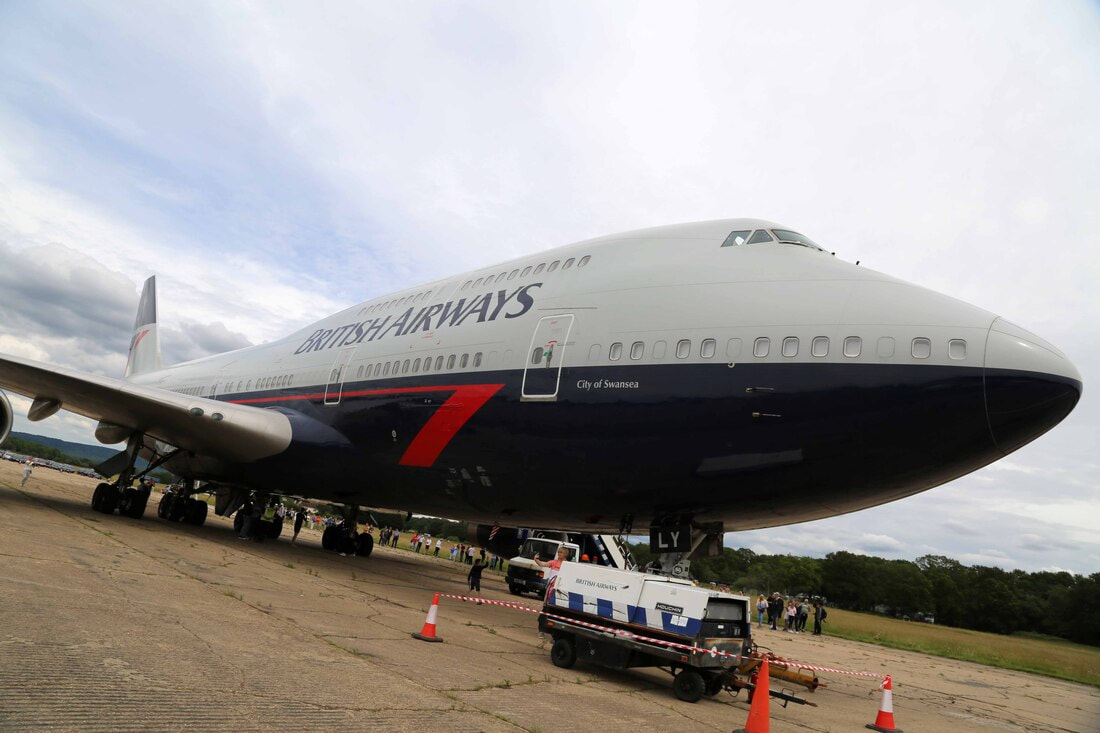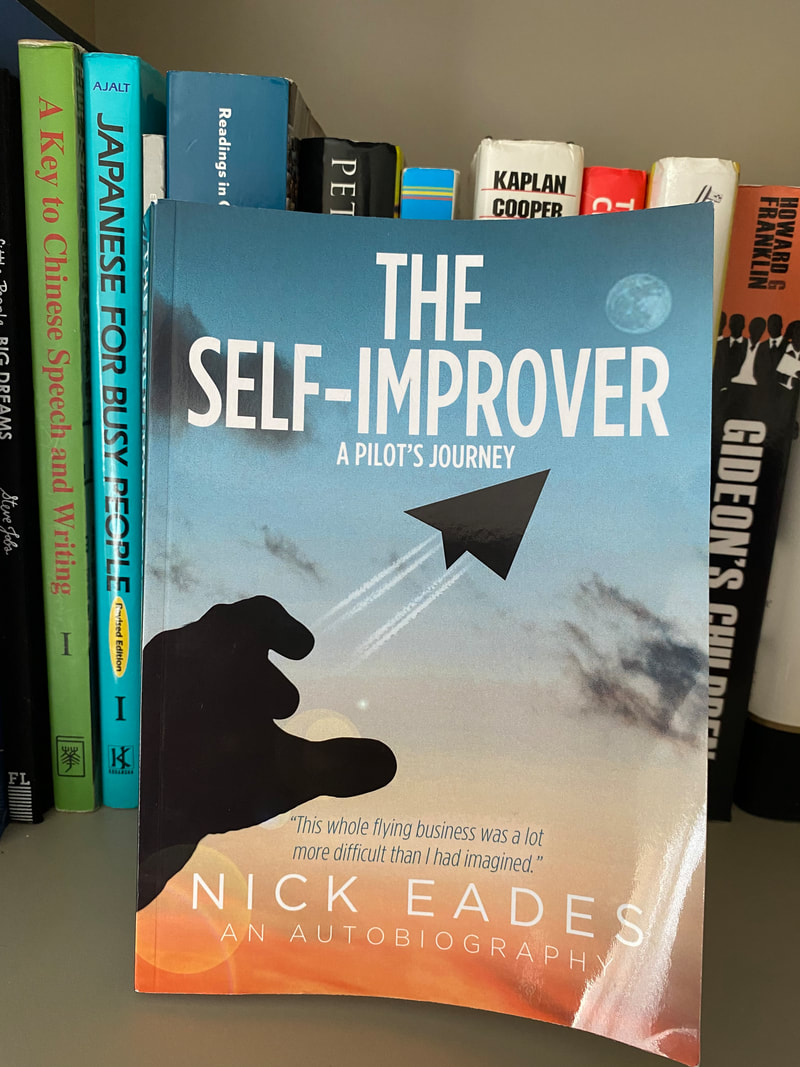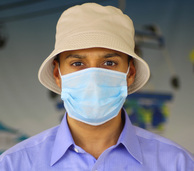|
Retired British Airways pilot Captain Nick Eades—the world's most experienced Boeing 747 pilot with over 30,000 hours on the type—published his memoir in 2021, Self-Improver. I had the chance to do a Q&A with Nick, including about his 40 years in aviation and how the industry has changed since the day he decided to become a pilot in 1979. During the Covid-19 pandemic, Captain Eades decided to write this autobiography of his life in aviation, from starting his career in aviation as a self-improver, right from the bottom because he didn’t have the money to attend a flight school. Hence the name of the book goes by the same name. The book is full of interesting antidotes, from when he was cleaning and loading aircraft to flying U2 on their Joshua Tree Tour. Here he reveals some interesting truths. Nav Singh [NS]: Nick, thank you very much for your time. Now that you have retired to a writer's life, you must miss all that travelling and glamour [except the time zones and simulator checks!], do you? Nick Eades [NE]: Thanks for having me having me here, Nav. I flew for 50 years. In that time, I flew over 30,000 hours on most types of aircraft, from open cockpit biplanes to executive jets, and of course the 747. I am now totally happy for others to enjoy the skies and I simply love my new career of writing and hopefully producing aviation themed books and television programmes. NS: The 747 has over 6 million separate parts, so, as a 747 pilot is it true that you need to know practically everything about the aircraft?, and how long did it take you to learn and know about the aircraft inside-out [even things that are perhaps small but important…. technical and non-technical]? NE: Interesting question! Things have changed drastically over the decades. When I did my initial classic 747 course in 1987, we were taught by a mixture of ground instructors and self-learning ‘Carousels’. Basically, we attended “chalk and talk’ lectures and then sat in a mock-up of a 747-flight deck and watched a series of slide presentations of the aircraft systems. We were also given an audio cassette to listen to at home and in the car. Of course, we were also given a full set of technical manuals. At the end of the course, you were very familiar with all of the aircraft systems. The entire course lasted approximately three months. However, a very experienced training captain at the time advised me that it takes a minimum of five years to be fully competent on the aircraft. After 34 years on the 747, here I was still learning! My last course on the Boeing 777 had a two-week ground course that was fully self-taught with no instructor lead training, except for a few hours in a fixed base simulator. At the end of each course, I knew a lot more about the 747 than I did about the 777! NS: As you’ve written in your memoir, you couldn’t initially afford to attend a flight school, so you became a self-improver. That is not easy these days because the cost of getting a license is expensive, and not many airlines offer sponsored cadet schemes. However, are self-improvers really looked down upon by the airlines? NE: Another excellent question. The basic cost of getting a commercial license is approx. £125,000, plus another £20-25,000 for a type rating on something like an Airbus A320 or Boeing 737. Today you can only achieve your Commercial Pilot’s License [CPL] by attending an approved school. The airlines today do not mind if you are “self-funded” or sponsored, as both trainees have gone through the same system. This is very different from the way I qualified. In the past you had to achieve 700 hours flying time to sit the flying exams. There was no formal training as such. A pilot first achieved a Private Pilot’s License [PPL] and then built up the hours. A good way to do this was to become a flying instructor, a course you could take after you had achieved 150 hours. So, in answer to your question, today’s airlines are very happy to take on self-funded pilots as it saves them the cost of initial training. In my day, a lot of pilots looked down on “self-improvers” as they had not completed an approved training course. Some captains even refused to speak directly to me, instead insisting on communications through the flight engineer (!). NS: Is it true that airline pilots spend as much time in the simulator as they do in the cockpit? NE: No, they don’t. I was flying 900 hours a year in the real aircraft and only eight hours a year in a simulator. NS: Wow, only eight hours a year! So, according to you, what makes a good airline pilot? NE: A combination of manual dexterity, intellectual flexibility, and emotional empathy, combined with a good sense of humour. NS: That is quite interesting. What would you say is the best and worst parts of being an airline pilot? NE: The best part is the incredible variety and sheer pleasure of flying. Combine this with being paid to see the world then you have a very heady mixture. The worst part is the endless night flying, time changes, and of course the dreaded six-monthly simulator checks. NS: Talking of simulators and training, do aircraft versions differ much? Can you name some differences between the old 747-400 and new model 747-8 model, for example? NE: The main difference is that the 747-800 is ‘fly by wire’. In other words, you fly the aircraft through a computer. The 747-400 was one of the last aircraft that the pilot, not a computer, actually moves the control surfaces. NS: Very thoughtful to say the least. Now, to me, the 747 looked like what in most people’s opinion a plane should look like [or at least it did when I was a kid plane spotting at Heathrow!]. In your opinion, could they have kept the 747 going with more efficient engines and aerodynamic wings or it just wasn’t possible? NE: No, the 747 was actually designed on the back of a cigarette packet in the 1960’s [!]. Sadly, a four-engine aircraft is no longer commercially viable. Engine technology and reliability is so advanced today that flying in a twin-engined aircraft today is statistically safer than flying in a four-engine aircraft 40 years ago, and of course a lot more financially efficient. NS: One of the world’s most famous and challenging approaches was to the former Kai Tak airport in Hong Kong [Madeira in Funchal is probably similar, but nothing beats Kai Tak!]. Can you share what it was like doing angled approaches at Kai Tak? NE: I flew into Kai Tak on many occasions. Obviously, the approach and landing onto runway 13 with the famous “checkerboard hill” approach was exciting, especially in a 747! You literally flew towards a red and white checkerboard on a hill and when you reached a certain point you executed a turn to the right. You the picked up the IGS (Instrument Guidance System), which guided you literally through the skyscrapers until a last steep turn at 200 feet to line up with the runway. It was a tremendously challenging and exciting approach and landing because the runway ended up in Hong Kong Harbour, and for those unlucky enough to get wrong, they actually ended up in the harbour itself! The beer that night somehow always tasted sweeter! NS: Even for pilots who fly the latest Airbus or Boeing aircraft, nothing beats flying the 747, or comes close to it! What was it really like flying the 747? I mean the sheer size...things like lining up on the runway [some have compared it to steering a double-decker bus while being sat the top deck!]. NE: On my first day at The Cranebank Centre, the former British Airways training facility near London Heathrow Airport, the instructor pointed to an office block at the other side of the carpark and asked us to look at the very top of the building. There, above the final row of windows, was a blue plaque. We were asked what we thought it was there for? Everyone could not believe it when we were told that was the height of the tail of the aircraft we would shortly be flying. My first take off was as exciting as my last one 34 years later. We would taxi out, looking above everything else and feel an immense pride in flying this incredible aircraft. You could instantly tell that every other pilot was jealous and wanted to in the seat you were currently occupying. Turning onto the active runway, I always watched the face of my co-pilot as they pushed the throttles forward, waited until the engines were stable, and then announcing, “Setting Power”. Almost without exception the smile on their faces grew wider as the aircraft accelerated down the runway. My last grin was as large as my first one. It was quite simply the ultimate flying machine. NS: Now, with all the buzz about AI affecting many industries, including aviation, is it really going to effect on this industry? I mean, planes have had autopilots for decades and have to some extent been on “artificial intelligence” since the 1980s at least. NE: This is a hot subject in aviation and has been over the past few decades. There is a great article called “Children of the Magenta Line” written in 1997. This details pilots’ tendency to blindly follow the magenta line on the new computer screens in modern aircraft at the expense of everything else. In other words, pilots were losing their natural ability to manually fly and navigate the aircraft and over relying on automation. This has resulted in a number of accidents that, arguably, would not have occurred if the pilots had retained their manual flying skills. That is why I personally hand flew the aircraft on very suitable occasion and always backed up the computer’s predictions with a rough prediction of my own. If the two varied by any significant amount I would stop everything and start again. NS: For some pilots, no doubt money is a good motivator to keep on going and flying, and perhaps they move to places such as China or the Middle East to earn very tempting high tax-free salaries that are unheard of in the UK [$350K tax free in some cases!]. What was the motivation in your case to stay at one airline and one aircraft type for majority of your career? NE: I had a very varied and interesting start to my career and had all the excitement and trauma condensed into a very short period of my career. When I joined British Airways, I found a lifestyle and aircraft that I loved. Life is not always about money, and I was lucky enough to be paid a reasonable salary, which allowed me to have great lifestyle balance. NS: Now, we have read a lot of myths about the brace position, can you please elaborate why the brace position is not included as part of the safety demonstration prior to take-off but is only written/illustrated in the safety card? I always wondered that because various airlines have created in-flight safety videos but have never seen the brace position being demonstrated.
NE: The simple answer is that it would be impossible for a cabin crew member to demonstrate the brace position without actually being in a seat. If they were in a seat nobody could then see them, except maybe a few people sitting next to them! The brace position was actually changed a while ago to reflect the differing seating options on today’s aircraft! NS: Nick, thank you very much. It has been an absolute pleasure having you on my blog! NE: Pleasure is mine. Thanks. Thanks again to Nick for spending time to share his thoughts, and for being kind enough to autograph his book for me. And before [or during!] your next long-haul flight, you may want to read Nick’s book! Click here to purchase a copy.
0 Comments
Your comment will be posted after it is approved.
Leave a Reply. |
Get in Touch:LIFE MATTERSHere I share my thoughts
and experiences during my travels, and how some things have affected my life as an expat and world traveller. Travelling is about capturing that moment in life. Every word, view and opinion on this page is that of Navjot Singh - except where indicated. The most recent is at the top. Scroll down to read the archive. Or search using CTRL+F (COMMAND + F) and enter a keyword to search the page. Just some of the stories you never heard before. The NAVJOT-SINGH.COM web blog is separate to this web site....Click blog, which may not be visible in some countries due to local firewall restrictions, so in those cases this weblog may be read. The weblog also includes some of my press trip reports- most of which are not published on the official blog because of copyright issues. The weblog also contains articles that may be associated directly with a PR trip for a country, airline or a hotel. These are PR reviews done in relations with various companies. If you are an investor or a trend watcher then you may find this website useful as investing has a lot to do with personal observations and finding the ideal trend or next big thing. The average human on the street frequently knows far more about the state of the economy than politicians, university professors, subject matter experts, and financial analysts who seldom travel, or if they do so, only from one hotel to another hotel! The pulse and vibrancy of an economy is nowhere more visible than on a country's streets. All photos and words are © Navjot Singh unless stated. Photos taken by others or by agencies are appropriately copyrighted under the respective name. No photo or word/s may be taken without the prior written permission by the author (i.e. Navjot Singh). All Rights Reserved. Archives
April 2024
Categories
All
|





 RSS Feed
RSS Feed







